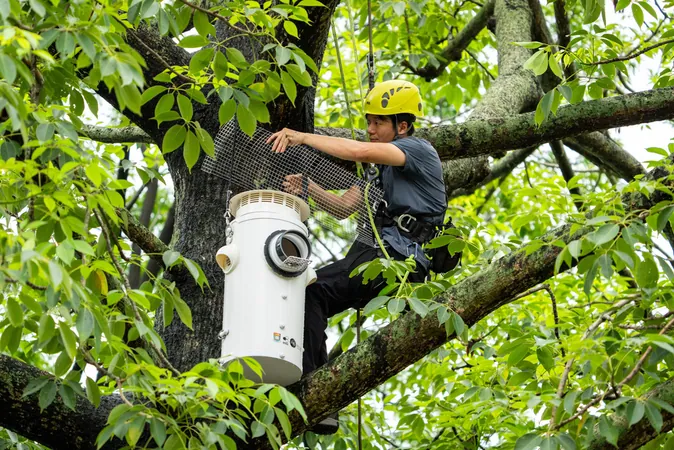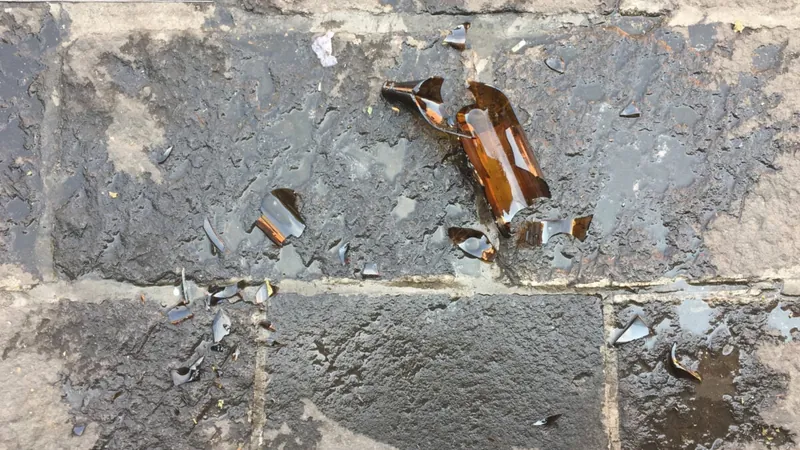
Incredible Discovery: Critically Endangered Yellow-Crested Cockatoos Find Refuge in Hong Kong!
2025-09-22
Author: Jessica Wong
HONG KONG — In an astonishing twist of fate, the critically endangered yellow-crested cockatoos have found an unexpected sanctuary amidst the concrete canyons of Hong Kong. These striking snow-white birds, adorned with vibrant yellow crests, are now squawking through the city's urban parks, but they face significant challenges in securing their future.
Originally hailing from Indonesia and East Timor, the yellow-crested cockatoo population now accounts for about 10% of its global wild numbers, which is a mere 2,000 mature birds. Unfortunately, research has revealed that their numbers within the city have stagnated as natural nesting sites in aging trees decline due to destructive typhoons and government-sanctioned tree trimming. This habitat loss, combined with global threats like illegal pet trading and climate change, has pushed these beautiful birds to the brink of survival.
Enter Hong Kong’s dedicated conservationists, who are stepping up efforts to help these feathered inhabitants. Their innovative solution? Installing artificial nest boxes that replicate natural hollows. Astrid Andersson, a postdoctoral researcher at the University of Hong Kong and leader of this ambitious project, has already seen success, with a pair of cockatoos nesting in one of her boxes on campus. Her goal is to install 10 boxes by the end of the year, with hopes of increasing that to 50 across Hong Kong Island in the years to come.
"With these measures, we can ensure they continue to thrive in the heart of the city!" she remarked.
A Struggle for Survival: Dangers in Their Native Habitat
Once a common sight across Indonesia's archipelagos, the yellow-crested cockatoo is now fighting for its life. The International Union for Conservation of Nature reports a staggering 90% of the population has vanished since 1978, primarily owing to the insatiable demand from the pet trade. Alarmingly, enforcement of Indonesia's 1994 export ban has been weak, facilitating continued illegal trapping — including a shocking instance of 20 birds found stuffed in water bottles.
Adding to their troubles, deforestation due to agriculture and logging has devastated Indonesia’s tropical rainforests. Between 2002 and 2024, the country lost a staggering 41,300 square miles of its forests — a loss the Global Forest Watch reports is about one-third of all tree cover disappearing globally. Climate change further exacerbates these challenges, causing wildfires fueled by increasingly arid conditions.
Will Hong Kong's Bird Market Complicate Restoration Efforts?
The cockatoos spotted in Hong Kong’s parks may have originated from escaped or released pets. There’s an urban legend that these birds were released by a British governor during World War II, adding a layer of mystery to their presence. While commercial trading in wild-caught cockatoos is banned, the city permits sales of captive-bred individuals, although no breeding operation is registered in Hong Kong.
In a shocking revelation, a three-month-old chick was recently priced at an eye-watering 14,000 Hong Kong dollars ($1,800) in the local bird market. A 2017-2018 study led by Andersson revealed that 33 cockatoos were available for purchase, a tripling since 2005, raising concerns about their sources. To address this issue, Andersson has developed a forensic test to help differentiate between wild and captive-bred birds, and hopes it will soon be utilized in Hong Kong’s markets.
Sadly, many residents are unaware of the critical status of these birds. Dreamy Cheung, who purchased her pet cockatoo, Mochi, in 2021, expressed her anxiety upon discovering its endangered status.
A Hopeful Future: Coexisting with Nature?
Despite the challenges, Hong Kong’s cockatoos could symbolize a unique opportunity for wildlife and humanity to coexist in a bustling urban environment. Andersson suggests that the local cockatoo population may even contain distinct genetic lineages that are absent in their native territories, potentially aiding in their survival.
The conservation team also plans to use cameras in the nesting boxes to gather invaluable data on the cockatoos’ reproductive behaviors, a little-studied aspect of their biology. As conservationist Harry Wong installed a nesting box in a park, the excited sounds of cockatoos echoed through the tree branches, signaling a hopeful new chapter for this beautiful species.
Wong, reflecting on past setbacks, remarked, "We can create spaces in the city that allow our wildlife to coexist with us!" With efforts like these, there is hope that Hong Kong’s yellow-crested cockatoos will not only survive but flourish amidst the urban wild.



 Brasil (PT)
Brasil (PT)
 Canada (EN)
Canada (EN)
 Chile (ES)
Chile (ES)
 Česko (CS)
Česko (CS)
 대한민국 (KO)
대한민국 (KO)
 España (ES)
España (ES)
 France (FR)
France (FR)
 Hong Kong (EN)
Hong Kong (EN)
 Italia (IT)
Italia (IT)
 日本 (JA)
日本 (JA)
 Magyarország (HU)
Magyarország (HU)
 Norge (NO)
Norge (NO)
 Polska (PL)
Polska (PL)
 Schweiz (DE)
Schweiz (DE)
 Singapore (EN)
Singapore (EN)
 Sverige (SV)
Sverige (SV)
 Suomi (FI)
Suomi (FI)
 Türkiye (TR)
Türkiye (TR)
 الإمارات العربية المتحدة (AR)
الإمارات العربية المتحدة (AR)